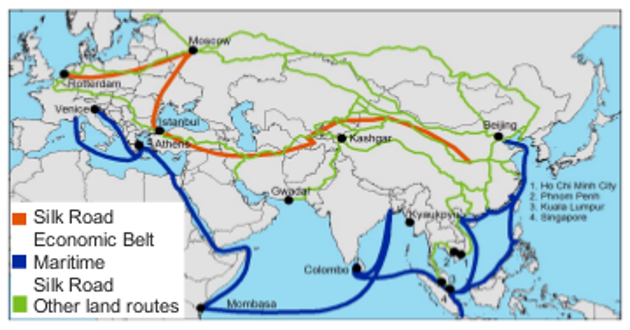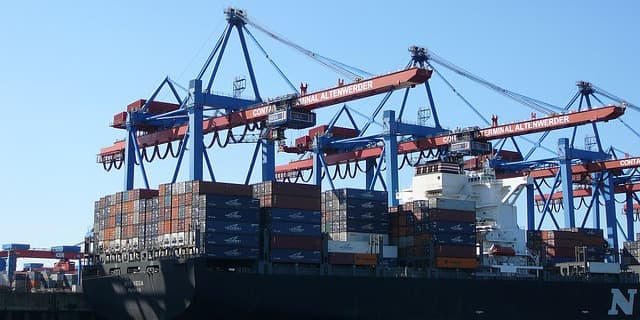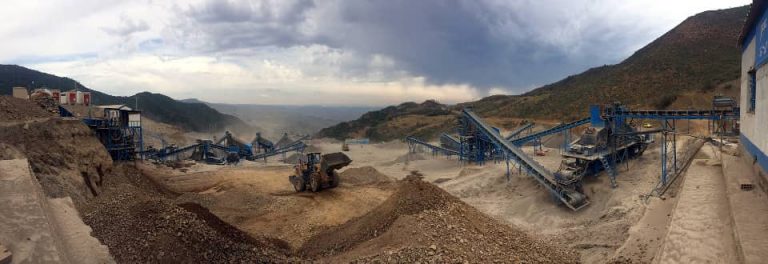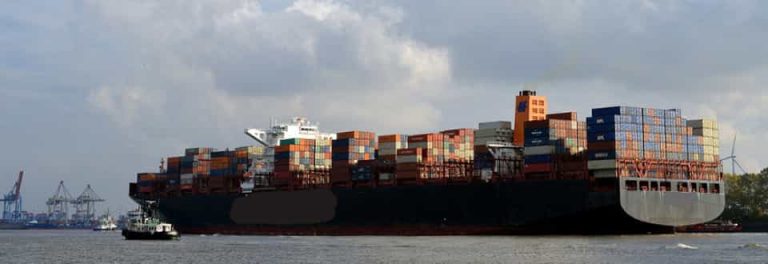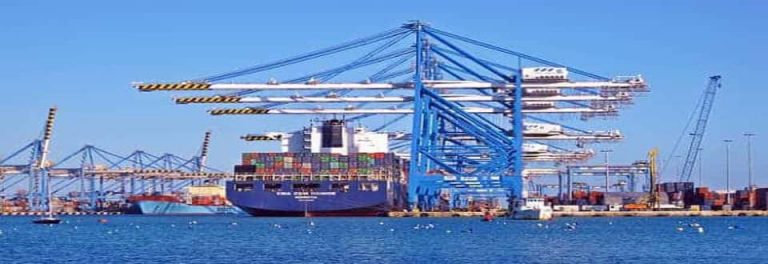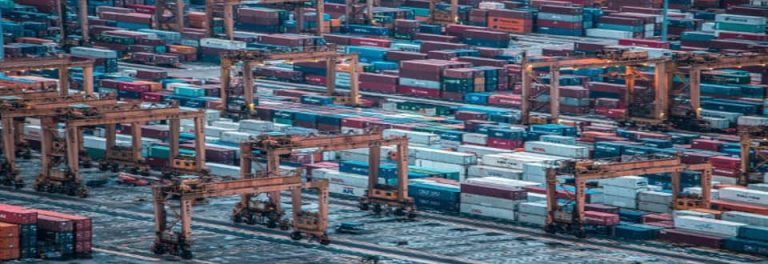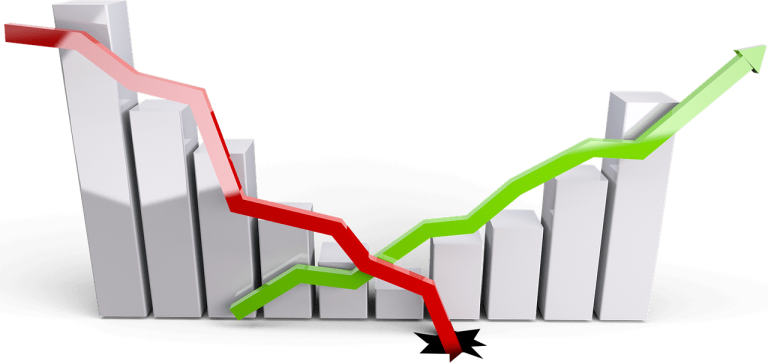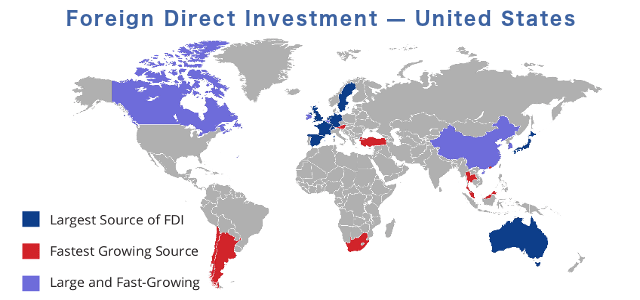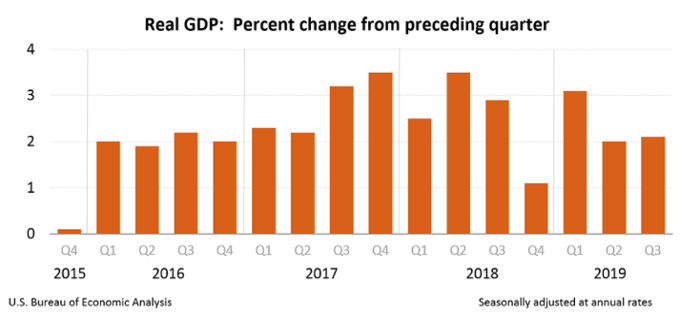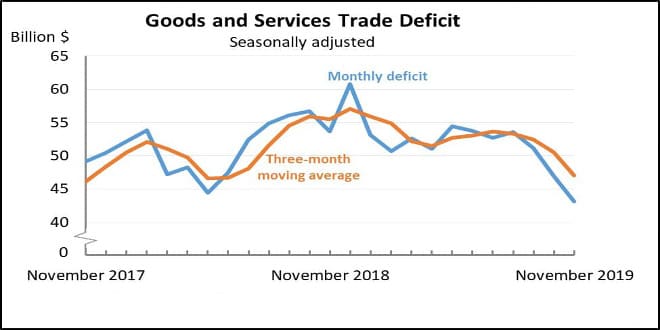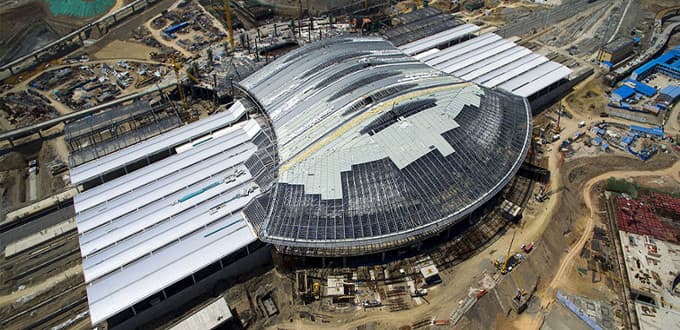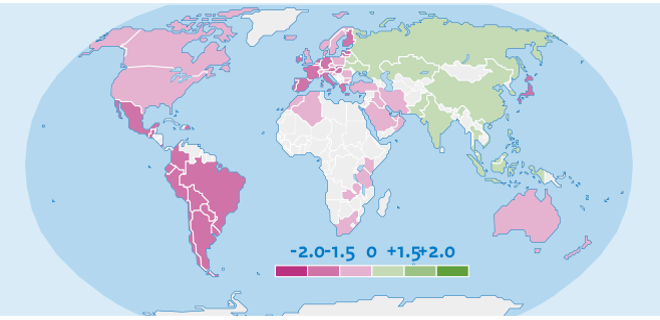An Interconnected & Interlinked World
Changing Landscape of Global Economy.
Changing Landscape of Global Economy.
MIC 2025 || The Changing Landscape of Chinese Economy
Marching into the Made-in-China 2025
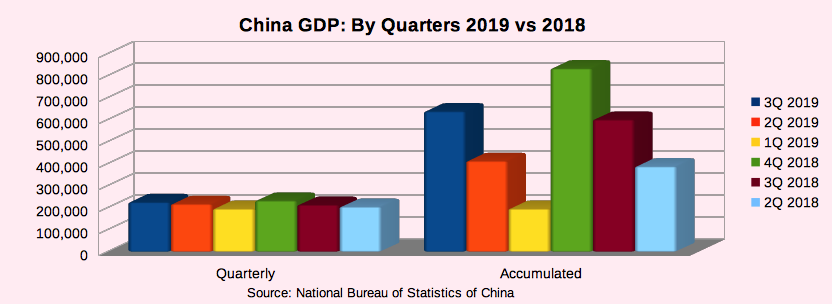
It was in 2015 that China unveiled its Made in China 2025 (MIC 2015) plan. The objective of this ambitious plan is to transform China from being the ‘factory-of-world’ to the innovator, designer, and producer of high-tech and high-end goods and services.
MIC 2025 was indeed a blue print to transform and refocus the Chinese industry for producing high-tech goods and services from computer chips, robotics, core components and materials, commercial aircrafts, information technology, clean energy, smart vehicles and cities to indigenously developed software systems. The dominance in the field of AI – and its application, in all aspects of economy, industry, security, and military is another unspoken goal of MIC 2025.
This transformation—rather, metamorphosis of the entire economy, mandates transitioning the country’s expansive and unique manufacturing infrastructure—from its skilled labor force and local and global resources to its extensive state and privately owned R&D base, towards producing more specialized and high-end goods and services.
To materialize these goals, China—both the central and provincial governments and the private sector, have been investing heavily over the last many years in building sophisticated infrastructure across the BRI economies, and, at the same time, developing and innovating new technologies to dominated the global markets.
It was Back in 2013—to the further frustration and irritation of the Western industrialized countries, that China had embarked upon its Belt and Road Initiative (BRI). It is a massive trade and infrastructure project that aims to link China to hundreds of economies across Asia, Europe, Africa, and Oceania.
The implementation of the Belt and Road Initiative, which is already moving forward full speed, will further push the Chinese high-tech goods and services—envisioned under the MIC 2025 project, into a vast majority of global markets, and, consequently, pose a competitive threat to western enterprises.
In order to ensure the success of the MIC 2025, the central and local governments in China are implementing policies that are encouraging more cooperation and coordination between Chinese enterprises. Research across the board at the educational institutes is also being fully aligned with the needs of the industries and economy. In this manner R&D is being directed to become more ’relevant’, original, and innovative.

China’s lead in some highly specialized fields like 5G (Huawei), Quantum Computing, quantum entanglement, deployment of AI, and demonstrated success in space and military technologies are testament to the success of the MIC 2025 plan/initiative that is already in full swing.
The MIC 2025, in effect, entails China to become an innovator and leader in advanced manufacturing, an area that typically had been the domain of rich and developed western countries—like the United States of America.
Understandably, such ambitious plans of China are causing considerable irritation and consternation in western countries – especially in the United States. The US administration has been leading the pack in accusing China of using ‘unfair practices’, including the ‘theft’ of Intellectual Property. The fear in the west is that using those unfair practices China wants to become the world’s tech superpower.
Further, there is also another consequential fear factor, especially in the US, that the implementation of MIC 25 will push the foreign competitors out of the lucrative Chinese market, and, at the same time, Chinese companies will pose a serious competition to their Western counterparts in third world markets.
And, these fears and anxieties of losing out to China are the real reasons and major factors behind Trump’s Trade Wars.
But, thanks in large part to China’s increasingly wealthier and confident home consumer base, Chinese economy is back on solid grounds. Chinese enterprises and the economy seems to have already adjusted to the new realities of trade and commerce and its trade with the world—minus the US, is growing strong.
At the end of 2019, while China’s Foreign Direct Investment into US was down more than 74% and export is down more than 11%, its export and investment into EU, Asia, Africa, middle East, and South America has been up significantly – outweighing the losses in the US market.
As China is accelerating the process of ‘opening up’ its domestic markets to foreign businesses and investment, increasing appetite of Chinese consumers for consumption is further helping to boost the confidence of foreign businesses in the Chinese market.
Trade Wars aside, there are a lot of opportunities for global minded businesses to expand and grow in China.
Metamorphosis of Chinese Economy
Chinese economy has been shifting, adopting, and changing at a breakneck pace since 2013. The Trade Wars started by Trump in late 2017 have given more energy and momentum to the already being implemented policies of diverting the Chinese economy away from manufacturing cheap products and leading it into developing and producing high-tech and high-value products and services.
The emphasis of Chinese Government is on increasing the purchasing power of consumers to spur production and consumption. Consumers in China are expected to remain the main driving force behind its domestic growth. In 2018, local consumption created 78 percent of GDP growth. As the consumers remain confident and willing to grow their spending China can easily maintain its stated gaol of 6 percent or more growth in coming years.
Along with enhancing its own high quality production of goods and services, China is also opening its markets further to encourage the import of foreign goods and services.
It is an enormous opportunity for all the international minded businesses.
Digitization and the E-Commerce:
Everything speeds up in the digital economy, and nowhere is that more evident than in China. It amazing to observe that in little more than a decade, China has emerged from almost nowhere to become the largest e-commerce market in the world. It accounts for more than 45 percent of global e-commerce transactions.
Digitization is happening in China at a breakneck pace. As a consequence, e-commerce, mobile payments, and digital banking are being adopted as nowhere else in the world. Its consumer economy is already among the world’s most digitized.

China’s mobile payments are 15 times the value of those in the US. The embrace of digitization in all aspects of life is further spurring innovations in similar technologies.
High-tech and Start-up Companies.
Following on these trends, business transformation is also accelerating and an explosion in start-ups are emerging on these business models. This phenomenon itself is generating more Unicorns in China.
A ‘Unicorn’ is a company that is a privately held start-up business with a valuation over $1 billion—It was venture capitalist Aileen Lee who coined the term “unicorn” to describe any privately-held startup worth $1 billion or more. As of 2019, there are 426 Unicorn companies in the world with a combined valuation of more than US $1.4 Trillion.
Thanks to these trends, China is now home to one in three of the world’s unicorns. China occupies the top spot for global venture-capital investment in virtual reality, autonomous vehicles, 3-D printing, robotics, drones, and artificial intelligence.
As the US is closing the doors of higher education, research, and investment on Chinese scholars and businesses, China is quickly adjusting its stance and positioning itself to get the best of it.
On the investment front, Chinese investment levels into the United States, that had fallen by more than 70 percent in 2018, are on target to fall further in 2019. Chinese companies do not want to be tangled for months in a review process with the Committee on Foreign Investment in the United States (CFIUS), with the high chance of the deal being rejected.
For the start-ups in the US, this means the loss of investment funds from China. First, Chinese investors used to offer a valuation of up to four to five times what domestic investors offered. Second, the Chinese investment was also a guarantee for the star-ups in the US to gain an enhanced access to the Chinese market. Chinese capital withdrawal is a big loss for the high-tech start-ups.
Shift in Higher Eduction and Research
On the higher education and research front, Chinese government is tackling the issue to better serve its long term interests. It is seeking and attracting world-class research institutions to set up operation in China.
One example of this ‘win-win’ approach is the Oxford Suzhou Centre for Advanced Research. This project is jointly established by the University of Oxford and Suzhou Industrial Park. It will provide the Chinese researchers an opportunity to engage and collaborate in cutting-edge research and work with focus on advanced medicine, where the University of Oxford is ranked number one globally.
US Enterprises Establishing Presence in China
As for the businesses in the US, the loss of Chinese market is not an acceptable option—no large scale business can be exacted to remain viable and profitable with the loss of 25% to 40% of market. They are already taking the steps to ‘side-step’ the effects of these ‘off-again’ and ‘on-again’ policies of tariffs, sanctions, trade wars.
Businesses around the world are noticing the seriousness of Chinese intentions and plans by looking into the success of the Belt and Road Initiative and its reception by the global community.
Corporations in the US are already working to create separate corporate structures for their ‘China-focused’ and ‘US-focused’ operations. The tactic that is being incorporated is to form separate ‘supply-chain-logistics’ and ‘route-to-market’ partnerships. Such a process of ‘separation’ of the corporate operations into two discrete entities also entails the establishment of distinct legal entities (corporate headquarters), development centers, brands, products and services etc.
Many US businesses are already making such moves; one example is, of course, Tesla. There is enough evidence to suggest that the likes of Microsoft, IBM, and Apple are not far behind.
The fact is that, entering into 2020, the Made-in-China-2025 is in full swing. The potentials for business in China are increasing with the acceleration of opening-up of Chinese markets to foreign investors and businesses. Those companies who enter the Chinese market early, may be well positioned to reap the rewards as the dust settles down!
元 $ € ¥ ₿
Information
Reports & Analysis
To Help Evaluate
The Potentials For
Business
&
Investment
In an Interconnected
World
-
The Belt and Road Initiative & Made in China 2025
Riding high on the fast tracks of the Belt and Road Initiative, Made in China 2025 is rapidly making inroads into the countries... Fierce competition from Chinese companies...
-
MIC 2025 || The Changing Landscape of Chinese Economy
It was in 2015 that China unveiled its Made in China 2025 (MIC 2015) project. Since then, Chinese economy is metamorphosing and changing at a breakneck pace...
-
Top Freight Forwarders by Country
Large scale ‘local area’ Freight Forwarders listed here, through their contacts and arrangements, also provide services on a global scale. Their main strength though lies in...
-
Most of the Top Global Freight Forwarders listed here serve all the major ports across the Globe, and, through relationships with their business partners, also provide a full suite of...
-
Glossary: Shipping, Freight, & Supply Chain Logistics
Like any other professional field, the shipping/freight industry has its own unique set of terminology—A rather extensive and complex one. Here we have compiled the Glossary of the most useful...
-
Global Foreign Direct Investment—Inward Flow
A comprehensive and historical Global FDI Inward-Flow Data spanning the period of 2000—2018. The data is compiled by grouping and associating a variety of economies together; by the state of...
-
The new phase of economy in China is an opportunity for the businesses. The emphasis is now on raising the living standards of masses, implementing supply-side reforms, and opening up...
-
Top 50 Container Ports in The World
Large Capacity & Super Busy Container Ports in a country are the pointers of country’s economic potentials...Bulk of the world trade in goods—more than 90% of it...
-
Supply Chain | Definition and Objectives
Supply Chain can be viewed as a network connecting a business to its suppliers and distributers to facilitate the production, processing, and distribution of its products to the consumers. It incorporates...
-
Global Business | Supply Chain & Logistics
With the technology—and global eCommerce platforms like Ali Baba, JD.com, Tancent, Kaola, Lazada, WooCommerce, VTEX, and Shopify etc, it is easier to sell products and services Globally.
-
Shipping Logistics | The Role of Service Providers
The logistics of getting the goods delivered to faraway destinations—especially to foreign markets, is a complex business. It requires the services of outside entities to...
-
Freight Forwarders | Role in Global Commerce
Freight Forwarders specialize in taking care of the entire process for their shippers | from warehousing to the shipping of their merchandise. They act as an agent and intermediary...
-
Real GDP | Nominal GDP vs GDP PPP
In evaluating and analyzing global investment opportunities and, also in the business decision making process, we need to know the actual comparative state of the economies of various countries and...
-
With the perspective of charting course for the expansion of business or investment, an analytical review of the ‘real value’ of a nation’s/region’s GDP is essential. To this end, an understanding of the methodologies used in...
-
New Global Business Order—The Global Information Stage
Whatever the business be, it has to be ready to play on the Global Stage. It is the global arena. The Supply-and-Demand chain is global. ..There is no business that can be considered as purely a...
-
Global Real GDP Growth Rate—And Forecast
Real GDP provides an inflation-adjusted measure that reflects the true value of all goods and services produced by an economy in term of real value of...
-
Foreign Direct Investment Inward Flow in The US—A Global Perspective
The Inflow of FDI in the U.S. was up by US $50 Billion in the 3rd quarter of 2019. FDI plays an essential role in the economic growth, creating jobs, and driving exports...The tables present...
-
US Gross Domestic Product: 2019—By Quarters
Real US GDP increased at an annualized rate of 2.1 percent in the 3rd quarter of 2019—that was up from the second quarter. Real gross domestic income (GDI)...
-
Foreign Direct Investment—Impact and Analysis
Foreign Direct Investment (FDI) plays an important role in the development and growth of any country’s economy - especially the developing countries. But, in actual practice...
-
Foreign Direct Investment and Business in China
China is establishing itself as the Model Destination for FDI inflow and a hub for corporate relocation and R&D...
-
US Global Trade & Top Trading Partners | Year-to-Date
Since hitting the peak in November 2018, U.S. global trade deficit in goods and services has been on the decline. But, the declining trends in both Imports and exports...
-
The Growth of Mobile Payments and Virtual Banking—A Global Perspective
Mobile Payments, Virtual Banking, and other modes of mobile transactions - both at consumer and commercial level, are growing globally at an ultra fast pace — more so in China and Asia Pacific and...
-
Belt and Road Initiative—Objectives & Achievements
As of the end 2019, the BRI — a project to interlink the global economies with China, includes 140 countries—encompasing more than 2/3 of the world’s population. The trade on BRI is...
-
In 2019 US imports from China dropped more than 12.5 percent to US$456 billion (Source: United States’ Census Bureau ) while China’s imports from the US dropped to US$122.7 billion...
-
Humans by nature - or by need, are traders. We trade our work, services, produce, or products for money. Then, we exchange that money for the goods and services that we need. Any excess/leftover money is either directly invested or deposited in the banks—thus, making the money to recirculate in the economy again.
Information, Data, and Reports organized alphabetically By Topic:
Global Business
Investment
Trade & Commerce
Always The Key to
to Wealth & Prosperity
Since before the days of
Camel Caravans & Sailboats


